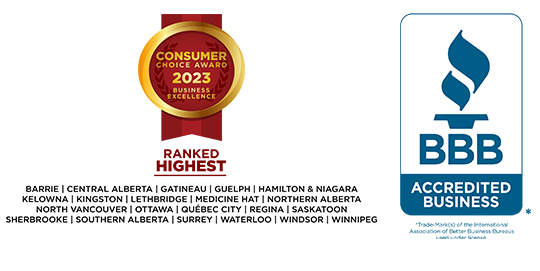What are your options if you can’t afford to pay your creditors back?
Regardless of the types of creditors you owe, and how much you owe, you still have options available and the opportunity to maximize recovery to creditors and reduce personal financial liability.

Economic downturns, unexpected expenses, or unforeseen circumstances can lead to a lot of stress for business owners already struggling to stay afloat.
Couple that with the inability to pay back your creditors and the situation may seem dire. However, amidst these challenges there are a range of options and strategies available to help alleviate your financial burdens and pave the way towards recovery.
What types of creditors are there?
There are three main types of creditors most businesses will be faced with paying back. They are:
- Canada Revenue Agency (CRA): The main types of debt to the CRA include payroll source deductions and HST
- Secured creditors: These include banks, financial institutions, and leasing companies
- Unsecured creditors: These generally include employees and trade suppliers
What are my options?
Depending on your unique situation, there are a few routes you can take to pay back what you owe.
First, you need to give serious consideration to whether your business is viable moving forward. Reviewing the current financial position, future business prospects, and financial forecast in an objective manner is critical in determining next steps. If there is a business to be saved then there may be options available.
Second, for many, building and running their business has been an incredibly emotional process. If there is a business to be saved, taking the time to have an honest conversation with yourself, and those close to you, will help you realistically assess the situation, the commitment required, and make the appropriate steps to regain control of your financial situation.
If your business can be saved…
Two options are:
- Informal arrangement with creditors
- An informal creditor arrangement involves direct communication with your creditors (banks, the CRA, your suppliers, etc.) to see if you can negotiate the terms of your debt. Can repayment dates be extended, is there room for compromise?
- Formal restructuring
- For a formal restructuring process, you’ll work with a Licensed Insolvency Trustee (LIT) to put forward a formal proposal to your creditors. This proposal outlines the conditions of your debt repayment to creditors and if accepted, is a legally binding document that enables your business to continue.
If your business cannot be saved…
In the event you’ve gone through a thorough business analysis with the help of a professional or have decided on your own you do not wish to continue operations, there are a couple ways to move forward:
- Informal self-liquidation
- Self-liquidation involves selling what you have and paying off creditors from those proceeds in an appropriate order. Generally, though not in all cases, the CRA is first for source deductions and HST, followed by secured creditors, and unsecured creditors last.
- If after you’ve paid off the CRA and secured creditors, and don’t have enough left for your unsecured creditors, a professional can assist you in how best to communicate with your remaining creditors to ensure they’re aware of your circumstances.
- Bankruptcy or receivership
- In both bankruptcy and receivership proceedings, a Licensed Insolvency Trustee (LIT) will take control of your assets and realize on them to the benefit of your creditors. A bankruptcy is typically driven by the business owner, and in a receivership, it’s driven by a secured creditor.
- The positive elements of these options are that the calls from creditors will stop, as the LIT will handle all inquiries and questions from your creditors moving forward. It also brings closure to the business in a formal way and enables both you and your creditors to move forward.
Directors’ liability is an important consideration for both options. If you cannot afford to pay off the CRA, secured creditors, or any other creditors you may have agreed to personal liability with, they can come after you directly for what you owe. Speaking with a professional is the best way to determine what your personal liabilities are before moving forward with either option.
CEBA loan repayment
If your business is one of the hundreds of thousands that took a Canada Emergency Business Account (CEBA) loan during the COVID-19 pandemic, there are some additional considerations to take.
While CEBA loan forgiveness repayment ended earlier this year, eligible outstanding CEBA loans have become non-amortizing term loans with full principal repayment due on December 31, 2026.
Loans, informal restructuring, formal proposals, and bankruptcy are a few options for those unable to repay these federal loans.
To learn more about CEBA loan repayment options, visit our blog post.
When it comes to financial challenges, taking the appropriate steps to regain control of your situation should be done as soon as possible.
To optimize your opportunities and to better understand your options, contact Paul Pettigrew, Senior Vice President, Insolvency, at [email protected].

